
Common Marmoset
Common Marmoset
Common Marmoset
The Common Marmoset is a small primate with distinctive white hair on both ears, known for its high intelligence and often said to be close to humans. Not only found in the wild or zoos, the Common Marmoset has recently gained popularity as a pet and is sold in pet shops as an exotic animal. This page will introduce the habitat and characteristics of the Common Marmoset, along with its various charms.
Common Marmoset Basic Infomation
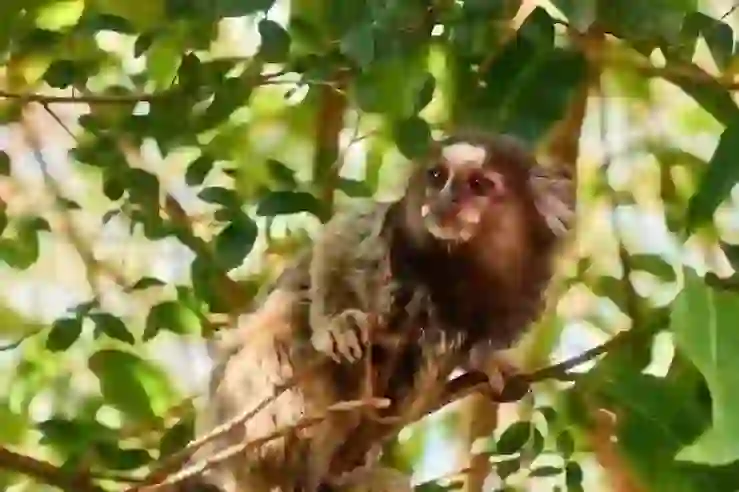
Class: Mammalia, Order: Primates, Family: Callitrichidae, Genus: Callithrix
Body length about 18.5-18.8 cm, Weight 236-256 g
The coat of the Common Marmoset varies in color including shades of brown, grey, and yellow. They have long white hair on both ears and white spots on the front of their heads.
Similar to other marmosets, they have claws instead of nails, except for their big toes, which have flat nails like other primates.
A common trait among marmosets is their large incisors, which are shaped like chisels and adapted to their diet, and a specialized cecum.
They are diurnal and actively forage during the day, resting in the trees at night.
They do not form large social groups but rather live in family units of about 9-15 individuals consisting of a breeding pair, their offspring, and other family members. They mark their territory by rubbing scent glands located under their arms and near their groin against trees.
Common Marmoset Q&A

What is the origin of the name 'Common Marmoset'?
The name 'Common Marmoset' originates from the word 'common' in its scientific family name and because it is a marmoset. In English, it is called 'Common Marmoset'. The scientific name 'Callithrix jacchus' comes from the Greek words for 'beautiful hair' and 'common'. The Common Marmoset is also nicknamed 'pocket monkey' due to its small size.

Why does the Common Marmoset live there?
The Common Marmoset is native to the northeastern coastal region of Brazil and is found in a wide range of forest environments including Atlantic forests, inland semi-deciduous forests, savannah forests, and riparian forests.
As a primate, it lives in trees and its body structure is adapted to dry boundary areas and secondary forests.

What does the Common Marmoset eat?
The Common Marmoset is omnivorous but primarily feeds on plant exudates like gum, sap, and resin, along with insects throughout the year. It also eats fruits, flowers, seeds, snails, bird eggs, and small mammals.
When kept as pets, they are fed a diet suitable for primates, which includes monkey food, insects like crickets and mealworms, fruits like oranges and apples, eggs, and dairy products. Monkey food, which is nutritionally balanced, should be the staple, with fruits and insects given as treats.

Do Common Marmosets eat sap and insects?
Unlike other primates, Common Marmosets have a diet centered around plant exudates and insects.
They use their claw-like nails to cling to tree trunks and skillfully use their large chisel-shaped incisors to make holes in trees to lick or bite off the plant exudates.
From January to April, when fruits are scarce, they rely heavily on plant exudates and insects. Despite their small size, insects alone can satisfy their nutritional needs.

Do Common Marmosets live with their relatives?
Common Marmosets live in groups of about 9-15 individuals, typically consisting of a breeding female, a breeding male, their offspring, and other relatives.
If the breeding male dies, the group may split. There is a hierarchy among females, with dominant females receiving grooming from subordinate ones.

Do Common Marmosets have a fast birth cycle?
Common Marmosets have a rapid reproductive cycle. They can conceive again just 10 days after giving birth, allowing them to have two litters per year, with twins being common.
A female can give birth to 40-80 offspring over her lifetime, contributing to their use in scientific research due to their high reproductive rate.
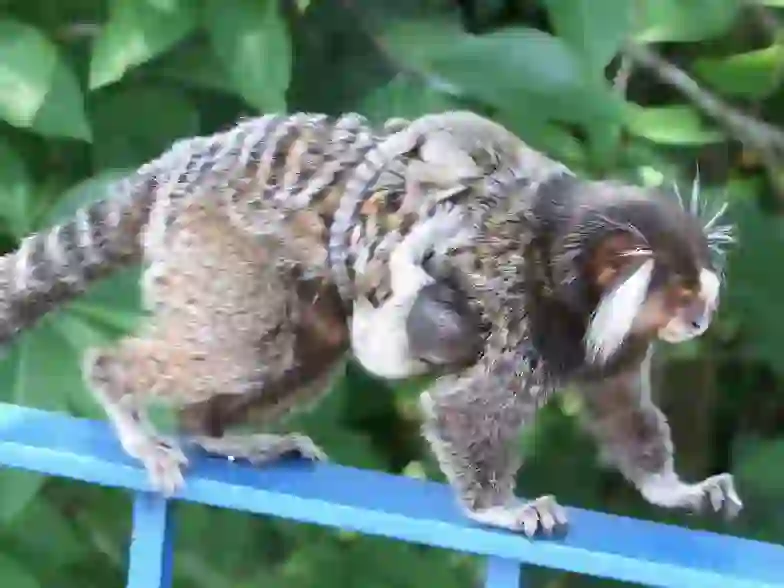
Do Common Marmosets help with child rearing?
Because the burden on the pregnant and birthing female is great, other group members, including those who have finished breeding, help with caregiving.
Common Marmoset offspring are weaned at about three months old and start playing within the group. Older siblings play and carry the younger ones, helping with their care.

Are Common Marmosets considered close to humans?
The Common Marmoset was the first New World monkey to have its entire genome sequenced, making it a valuable model for studying diseases due to its closer genetic similarity to humans than mice.
They have been used in groundbreaking medical research, making significant contributions to the development of treatments for neurodegenerative diseases.
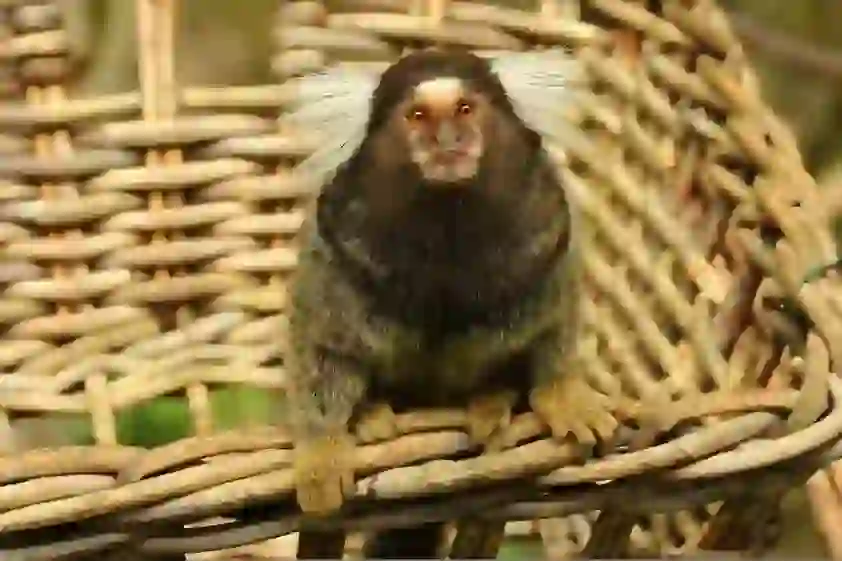
Where can you see Common Marmosets?
In Japan, Common Marmosets can be seen in many zoos, including Ueno Zoo in Tokyo, Chiba Zoological Park, Nasu Animal Kingdom in Tochigi, and Kamine Zoo in Ibaraki.
Other places include the Japan Monkey Centre in Aichi, Omoriyama Zoo in Akita, and Kobe Animal Kingdom in Hyogo.

Can Common Marmosets be kept as pets?
Recently, Common Marmosets have become more visible in pet shops. They are considered intermediate in terms of ease of care among exotic animals.
They are diurnal and active during the day, resting at night. When keeping them as pets, it is best to provide a tall cage with perches, hammocks, ladders, etc., to mimic their natural tree-dwelling environment.
Due to their natural habitat, they do not have fixed toilet spots, making it difficult to train them to use a toilet. They may also spray urine, so it's recommended to lay pet sheets around their cage.

What kind of personality does the Common Marmoset have?
Common Marmosets are highly intelligent but can be wary if approached too aggressively initially. Gradually building trust is key, and once familiar, they may even sit on your hand.
They are timid, so keeping them in a quiet environment is crucial to prevent stress.
They are capable of learning through training and are affectionate, often desiring constant company.

What should you be cautious of when keeping a Common Marmoset?
Common Marmosets are shy and can be stressed easily by aggressive handling. They are susceptible to rickets if not exposed to adequate UV light, so placing their cage in sunlight or installing UV lights is necessary.
They are sensitive to cold, so maintaining a cage temperature around 30°C with pet heaters or warm lights is important for their well-being.

What are the lifespan and cost of a Common Marmoset?
Common Marmosets live 10-15 years in the wild and often less in captivity due to stress. In a well-managed environment, they can live up to 16 years.
They are sold in pet shops and by breeders for about 400,000 to 700,000 yen. Prices can be higher for younger and female individuals due to their reproductive potential.

Would you like to become a part of the 'Animalbook.jp'?
Turn your knowledge into Q&A and share it with the world. ※Publication will be activated after purchase. Let's share information together!
Common Marmoset Type of List
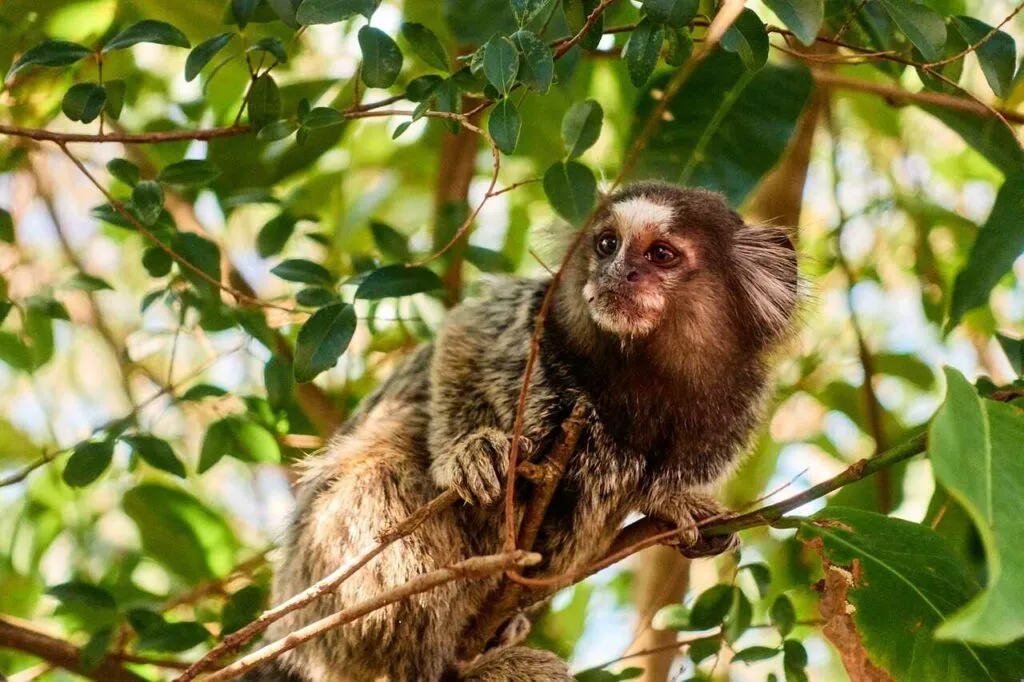
- Common Marmoset
Information
Congratulations! You are the first commenter!

Create Your Favorite List!
Common Marmoset
Save the animals you love! Build your own list to quickly revisit your favorites later.

Would you like to leave a comment?
※Please note: This is for the purchase of rights to post comments within the article.
Find Your Favorites!
Our shop offers a unique and attractive selection of goods themed around various animals.
Common Marmoset References

- Wikipedia https://ja.wikipedia.org/wiki/コモンマーモセット
- コモンマーモセット(ポケットモンキー)-動物図鑑 https://pz-garden.stardust31.com/reichou-moku/gereza-kinu-garago-ka/comon-mamoset.html
- 耳のフサフサが可愛いペットとしても人気のコモンマーモセット生態や特徴・飼い方について紹介! https://www.osaruland.jp/tips/1473/
- 新しい実験動物をつくり新しい治療法をみつける https://www.ncnp.go.jp/activities/ar2021-09.html
- コモンマーモセットはどこに住んでるの?動物園で会える?餌は? https://er-animal.jp/pepy/36734#:~:text=コモンマーモセットは日本国内,ことができますよ。
- コモンマーモセット|ペットショップのコジマ https://pets-kojima.com/library/zukan_small/detail/id=24986
Common Marmoset Introduction of media used

出典:https://pixabay.com/images/id-3545538/

出典:https://pixabay.com/images/id-3545537/

出典:https://commons.wikimedia.org/wiki/File:Callitrichidae.jpg

出典:https://pixabay.com/images/id-934932/

出典:https://pixabay.com/images/id-742458/

出典:https://commons.wikimedia.org/wiki/File:Callithrix_jacchus1.jpg

出典:https://pixabay.com/images/id-742464/

出典:https://pixabay.com/images/id-6552427/
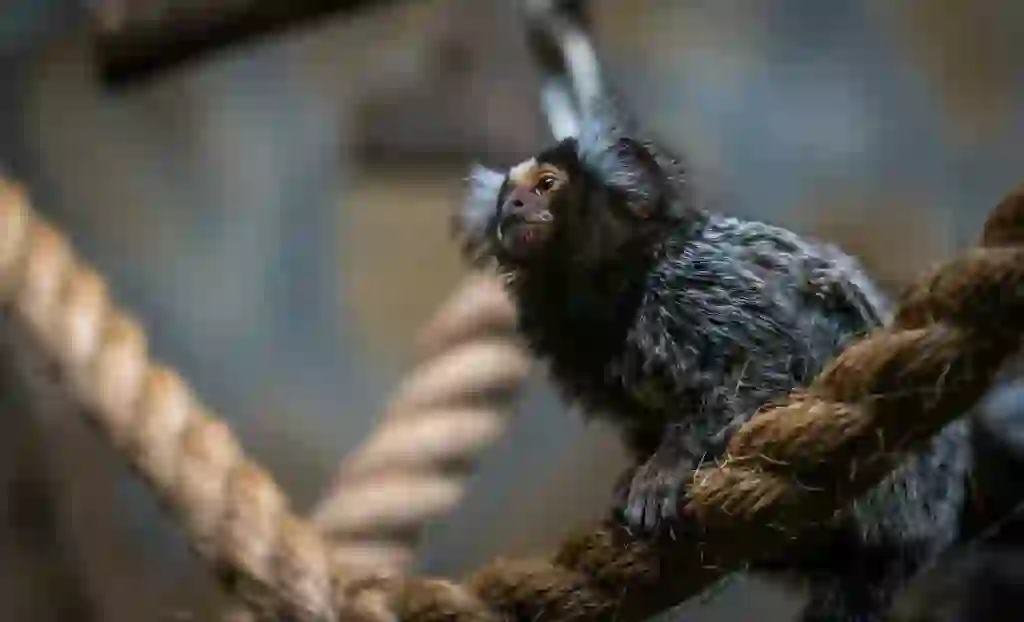
出典:https://pixabay.com/images/id-3082593/

Help Enrich Our Animalbook.jp with Your Media!
We are constantly looking to expand and enrich our Animalbook.jp with amazing photos and videos of animals. If you have any media that you'd like to share, please contribute and help us showcase the beauty and diversity of the animal kingdom. Your submissions will be credited and featured in our encyclopedia, reaching a wide audience of animal lovers.


















